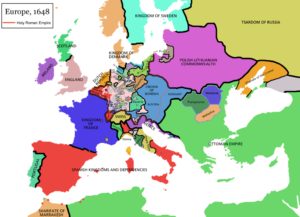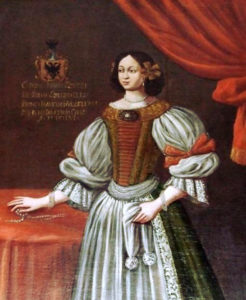26 June 1644 The Battle of Somos: Hungarian Transylvanians vs. Hungarians of Royal Hungary
The historical situation

Prince Rákóczi György of Transylvania (1593-1648) could afford to have an independent foreign policy, neither the sultan nor the Habsburg emperor could interfere in his actions. For example, he had a hand in the interior affairs of the Wallachian and the Moldavian voivodes, he tried to make them loyal to him alone. Also, he actively took part in Western political affairs. As for King Gustav Adolph, Rákóczi fell into Bethlen’s steps and also sent a delegation to Sweden but it happened too late because the Swedish ruler died. As a result of this, Rákóczi couldn’t join that time the Swedes against the Habsburgs to take Hungary back from the “Austrian usurpers”.

The reason for the delay of their coalition was that the Swedish king had wanted his military support against the Austrians quite unconditionally. But Rákóczi had his own terms: he wanted to keep his lands and the Transylvanian freedom of religion. The Habsburgs had done everything to hinder Rákoczi’s intervention in the 30 Year Wars: they had bribed the Ottoman Serasker (chief military leader under the sultan) who threatened Rákóczi to send Crimean Tatar and Turkish raiders to Transylvania if he tried to attack the Austrians. When this Serasker received his “silk string” from Sultan Murad, this obstacle was not there anymore.

So it happened that a decade later Rákóczi was free to decide to take sides with the Swedes when he learned that General Torstenson broke into Austria after 1642 at Olmütz. So in 1644, Rákóczi intervened in the 30-Year War, allying himself with the French and the Swedes. He declared war against the new Emperor, Habsburg Ferdinand III, but not to crush him beyond measure. He was not in a hurry to ruin the Austrians. In this respect, his thinking was perhaps similar to King Báthory István’s who had been balancing the power as a Polish king between the Habsburgs and the Ottomans.

Rákóczi’s Transylvanian army in 1644 February was on the march to join Torstenson, they were supposed to meet at Vienna. Rákóczi occupied the whole of Upper Hungary from the Habsburgs – similar to his fellow Transylvanian Princes like Bethlen and Bocskai the past had made a habit of it. The lands of Royal Hungary north of the Danube River were in his hands within a few weeks when he arrived at the Vág River. Yet, the majority of the Hungarian Estates of Royal Hungary did not support him.

As we saw, regarding Royal Hungary, Rákóczi could not expect any help from General Torstenson by this time because the Swedish general had already left for Moravia. Thus, the Transylvanian prince was quite alone to face the Habsburgs’ counter-attack. The Habsburg forces were not tied down by Torstenson in Hungary so they could regroup their troops and soon they attacked Rákóczi’s newly conquered lands.

The Battle of Somos, 24 June 1644


The outcome of Rákóczi’s campaign


Dear Readers, I can only make this content available through small donations or by selling my books or T-shirts.
If you like my writings, please feel free to support me with a coffee here:
You can check out my books on Amazon or Draft2Digital, they are available in hardcover, paperback, or ebook:
https://www.amazon.com/dp/198020490X
or at https://books2read.com/b/boYd81


My work can also be followed and supported on Patreon: Become a Patron!http://Become a Patron!


https://hungarianottomanwars.myspreadshop.com/

https://hungarianottomanwars.myspreadshop.com/all


